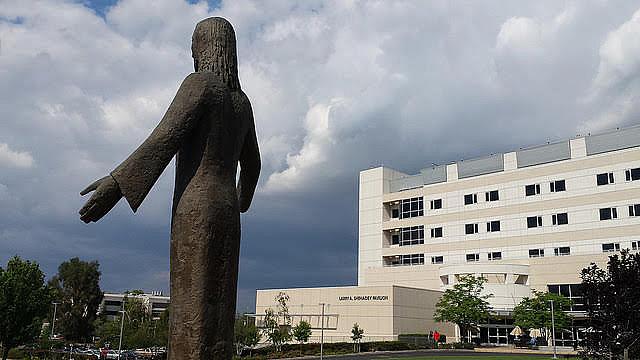How the disease-burdened San Joaquin Valley copes with an ongoing doctor shortage

California’s San Joaquin Valley lacks doctors. For every 100,000 residents, the Valley has 48 primary care physicians — 25 percent less than the state average of 64 — and an even lower share of specialists. The supply is also short on nurse practitioners and health professionals who accept Medi-Cal (California’s Medicaid program) and plans through the Affordable Care Act.
At the same time, the Valley has an outsized need for doctors. Home to concentrated poverty and some of the most polluted air in the country, the Valley’s 4 million residents suffer from elevated rates of asthma and obesity compared to the rest of the state. Life expectancies for poor and affluent residents can vary by as much as 20 years.
The doctor shortage is particularly acute when it comes to specialists like dentists, mental health professionals and endocrinologists. Kern County has the second-highest rate of diabetes in the state, and yet, according to the American Medical Association, only five dedicated endocrinologists are registered there. Other medical professionals estimate the number of endocrinologists to be even lower.
This shortage is nothing new, but it impacts Central Californians in a very real way. Research suggests it results in longer wait times for appointments and more visits to emergency rooms for non-emergency care. Rather than probe the size and scope of the problem, for my 2017 California Fellowship project I’m planning a series of three to five radio pieces that explore potential solutions through the eyes of those affected by it. Stories will be narrated features four to seven minutes in length, and will include first-person accounts and sound-rich scenes as well as commentary from experts.
Combating the shortage
When Brian Komoto opened a retail pharmacy in the small Kern County town of Delano, he discovered the community was in need of far more than pills. Within no time, Komoto was untangling drug interactions and answering questions for patients who couldn’t afford doctors’ appointments. Now, 35 years later, his corner pharmacy has grown to comprise three locations, six family-run companies, and an expanded scope of practice designed to reduce visits to the county’s overburdened doctors.
Pharmacists providing this level of care are rare now, but they may become more common with the 2013 passage of California Senate Bill 493, a law that allows pharmacists an even greater role in patient medical care.
Elsewhere in the San Joaquin Valley, students are gaining access to medical care at school-based health centers that offer physicals and specialist visits at no cost. Bakersfield City School District, where 88 percent of its 30,000 students qualify for free or reduced price meals, is the first in Kern County to roll out its own clinics — despite the fact that, unlike most school-based health centers, no nearby federally-qualified health centers had the bandwidth to supply doctors. Instead, the three centers are run by nurse practitioners and a single volunteer doctor. Since their launch in August 2016, they’ve already admitted thousands of students.
North of Kern County, hope is building in Fresno and Merced for new medical schools. A state assembly member recently introduced a bill to support building a medical school at California State University, Fresno. In 2016, California Health Sciences University, a Clovis pharmacy school built by a prominent Fresno County developer, announced a plan to install an osteopathic medical school that could begin enrolling students as early as 2019. This would be only the second medical school in the Valley, after the Fresno campus of the University of California, San Francisco, and would be up and running far sooner than the stalled medical school at UC Merced.
Evaluating the challenges and solutions
How does care from pharmacies and school clinics compare to that from more traditional doctors’ offices? What about osteopaths? And would more opportunities for homegrown medical education actually keep more doctors in the Valley? I’ll speak with patients who’ve taken advantage of Komoto’s expanded scope of practice and Bakersfield City School District’s school-based clinics, and I’ll probe the impacts of medical schools in comparable communities elsewhere in the country.
[Photo by David Prasad via Flickr.]

